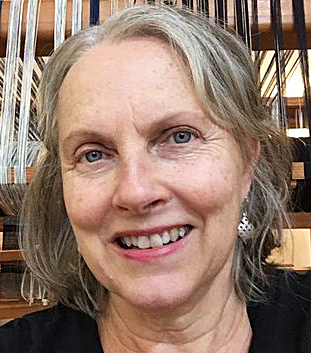Morning (11AM): Woolens & Waulkings, Tartans & Tweeds
Afternoon (1PM): Woven Sashiko
AM: Woolens & Waulkings, Tartans & Tweed
For centuries, plaid twills have been a cultural marker for Celtic people, the earliest examples of wool tweed dating from the second millennium BCE. This presentation will talk about those early examples, the migration to the later Celtic lands in the British Isles and the state of the tweed and tartan in Scotland after the industrial Revolution and more recently. Oh, and sheep. And how did all that tartan stuff start? And what is a waulking? And what did I learn in Ireland last summer?
PM: Woven Sashiko
Woven Sashiko or Sashiko ori refers to the adaptation of the stitching patterns of rural Japan, collectively known as sashiko, to a woven structure. Although identified technically as a supplementary warp and weft technique, my investigations of this weave structure were inspired by the exploration of hitomezashi sashiko, in which the stitching threads intersect at right angles to produce beautiful stitched patterns that reinforce, repair or embellish cloth. These lines can be woven into a cloth in the warp or weft and diagonal lines can be stitched in afterwards. This structure challenges weavers to think about structure in a different way as they learn to control the intersections of pattern threads. We will learn a little about the history of sashiko stitching in Japan and the weaving traditions of sashiko ori from Japan and other places.
About Beth:
https://www.bethrossjohnson.com/
Beth Ross Johnson is a weaver, teacher and workshop leader living in Black Mountain, North Carolina. She grew up in Charleston, South Carolina and when she became interested in weaving and textile arts, learned initially from students from Norman Kennedy, later studying with him for many workshops. A lifelong fascination with Asian art led to an interest in Japanese textiles and she has had two extensive stays in Japan to study kasuri (ikat weaving and dyeing) and sakiori (rag weaving) with master weavers there. Other avenues of exploration have been sashiko stitching and nyoho-e (Zen stitching). Recent studies have been in the ikat traditions of Europe, influenced by the 18th century wave of Orientalism on the continent, and woven structures like sashiko-ori and kasuri-ori that mimc hand stitching and ikat processes. The craft schools, weather, and music compelled a move to western North Carolina in 1980 where she has worked a number of arts related jobs (including in environmental and craft preservation in Cherokee) while maintaining a studio and teaching in formal and informal institutions.

